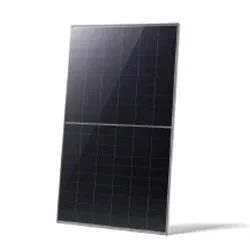average solar panel size
Understanding the Average Solar Panel Size
As renewable energy gains prominence in the fight against climate change, solar energy has emerged as one of the most popular and promising solutions
. Understanding the average solar panel size is crucial for homeowners, businesses, and advocates of renewable energy as it plays a key role in determining the efficiency, installation costs, and energy output of solar power systems.Solar panels come in various sizes, but the most common residential solar panel size is approximately 65 inches by 39 inches, equivalent to about 17.6 square feet. Each panel typically has an output of about 250 to 400 watts, depending on the technology used and the manufacturer. The wattage relates directly to the panel's efficiency a higher wattage generally means better efficiency, enabling a smaller number of panels to generate the same amount of energy.
The size of the solar panel is an important consideration when planning a solar array for a home or business. The total energy needs of the building must be calculated to determine how many panels will be required. A typical U.S. household might consume around 877 kilowatt-hours (kWh) per month. To cover this energy usage, approximately 20 to 25 solar panels may be needed, assuming each panel produces around 300 watts under standard test conditions. Therefore, the size of the solar panel directly influences the overall installation size and layout.
One significant factor impacting solar panel size is the technology being used. Traditional silicon-based panels (monocrystalline and polycrystalline) have known dimensions, but newer technologies, such as thin-film panels, can offer different sizes and configurations. While thin-film panels are typically less efficient than their crystalline counterparts, they can be advantageous in specific applications where weight or flexibility is a concern.
average solar panel size

Another critical consideration is the space availability for solar panel installations. In urban areas where rooftops may be small, homeowners might opt for higher-efficiency panels that produce more energy per square foot. This decision balances the trade-off of having fewer panels while maximizing energy output. For those with larger roofs or available land, installing traditional-sized panels might be more feasible, allowing homeowners to generate significant energy even if a larger number of panels are required.
In addition to physical size, the thickness of solar panels also plays a role in their performance and installation. Typical panels range from about 1.5 to 2 inches in thickness. This thickness is crucial for ensuring durability and resistance against environmental conditions such as wind, rain, and hail. Thinner panels may be easier to handle and install, but they might also be more vulnerable to damage.
The area required for installation can also be a concern. In general, a residential solar system might require around 200 to 400 square feet, depending on the total energy needs and panel efficiency. Planning for installation must also involve considerations of shading from trees, neighboring buildings, and other obstructions, as these factors can significantly impact energy production.
Moreover, understanding solar panel size is not solely about the panels themselves but also about how they fit into the larger solar power system. Components like inverters, racking systems, and batteries also need to be accounted for in system design. Inverters, which convert the DC electricity generated by solar panels into usable AC electricity, come in various sizes but must be compatible with the total wattage produced by the solar array.
In conclusion, the average solar panel size serves as an essential characteristic in the design and installation of solar energy systems. By understanding the dimensions and output of solar panels, homeowners and businesses can make informed decisions about their energy needs, costs, and the overall feasibility of solar energy solutions. As the solar industry continues to innovate and improve efficiency, learning about these specifications will help consumers navigate the options available to them while contributing to a sustainable energy future.
-
Unlocking Energy Freedom with the Off Grid Solar InverterNewsJun.06,2025
-
Unlock More Solar Power with a High-Efficiency Bifacial Solar PanelNewsJun.06,2025
-
Power Your Future with High-Efficiency Monocrystalline Solar PanelsNewsJun.06,2025
-
Next-Gen Solar Power Starts with Micro Solar InvertersNewsJun.06,2025
-
Harnessing Peak Efficiency with the On Grid Solar InverterNewsJun.06,2025
-
Discover Unmatched Efficiency with the Latest String Solar InverterNewsJun.06,2025







